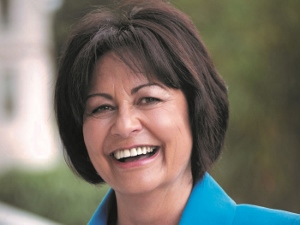

<p><img class=" alignright size-full wp-image-1261" src="http://schoolnewsnz.fastrackdev.com/wp-content/uploads/2015/02/SND12-wk2-Iwi-Hekia_Parata_300x225.jpg" alt="SND12-wk2-Iwi-Hekia Parata 300x225" style="margin: 5px; float: right;" width="300" height="225" />Education Minister Hekia Parata has released new information showing how iwi around New Zealand are achieving in education.</p>
<p> <!--more--> </p>
<p>The iwi education profiles provide an iwi-by-iwi breakdown of how Maori students are performing in the education system.</p>
<p>&#8220;For the first time iwi, hapū and whānau can clearly see how their kids are progressing from early learning to 18 years of age,&#8221; Ms Parata says.</p>
<p>&#8220;They can use the profiles to work with local early learning providers, schools and tertiary institutions to increase the achievement and opportunities of their young people.</p>
<p>&#8220;The profiles will be especially useful for schools within a Community of Schools when setting achievement targets. For example, primary schools, kura and iwi might use the profiles to identify the biggest priority for children in their rohe is to improve performance in reading.</p>
<p>&#8220;We want every kid to leave school equipped to reach their potential and be confident in their identity, language and culture. Quality information helps us achieve that.&#8221;</p>
<p>The profiles show that children from the three largest iwi, Ngā Puhi, Ngāti Porou and Ngāi Tahu, are tracking well towards the Government&#8217;s target of 98 per cent participation in early learning in 2016. The latest participation rates among these iwi range from 90.5 to 97 per cent.</p>
<p>The profiles also show NCEA Level 2 achievement rates have increased for all three iwi in recent years. However, there is still work to do for their young people to reach the target of 85 per cent of 18 year olds achieving NCEA Level 2 or equivalent in 2017. Attainment rates for the three largest iwi in 2013 range from 61.7 per cent to 68.7 per cent.</p>
<p>&#8220;Overall the profiles show improvement is happening across the system and within many iwi and hapū, but there is still more to do,&#8221; Ms Parata says.</p>
<p>Iwi Education Profiles are part of the Public Achievement Information Plan, designed to share information about the education system with the public.</p>
<p>Profiles show progress in early childhood education participation, National Standards and Ngā Whanaketanga Rumaki Māori achievement, and the percentage of students getting key NCEA qualifications.</p>

NZEI Te Riu Roa is considering legal action against the government for the disestablishment of…
NZQA is implementing AI-marking for all Year 10 written assessments from this year onwards, following…
Teaching personal financial responsibility isn't enough. Children should be taught broader economic context, argue New…
When students can't hear the teacher, they can't learn properly. Sound quality matters in education…
The Garden City is rich with learning opportunities, no matter what subject or part of…
Teaching Council of Aotearoa launch school leaders’ stories project with Unteach Racism to challenge institutional…
This website uses cookies.